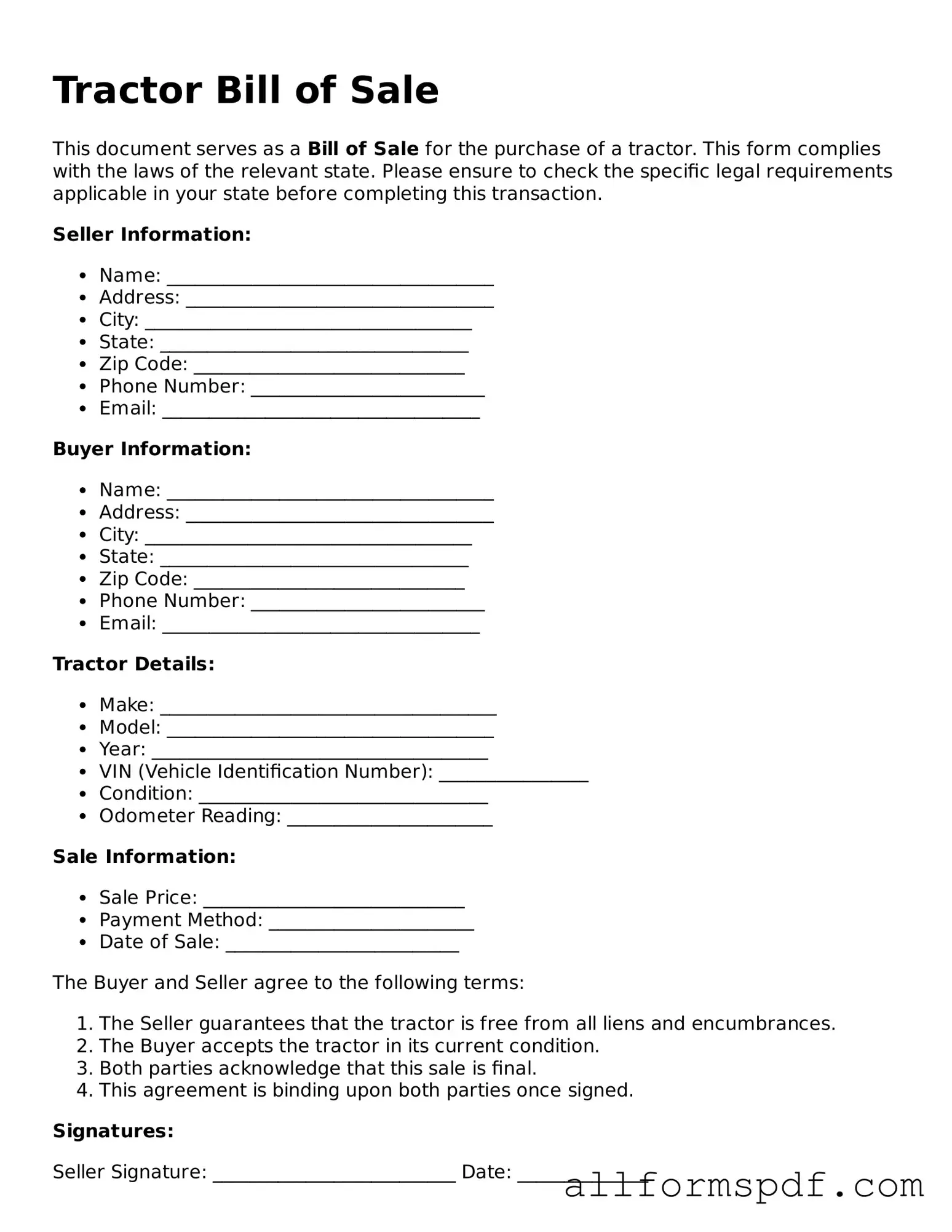Filling out a Tractor Bill of Sale can seem straightforward, but many people make common mistakes that can lead to complications down the line. One frequent error is neglecting to include all necessary details about the tractor. This includes the make, model, year, and Vehicle Identification Number (VIN). Without this information, it can be difficult to prove ownership or resolve disputes.
Another mistake is failing to accurately record the sale price. The price should reflect the agreed amount between the buyer and seller. If the figure is left blank or incorrectly noted, it may raise questions during tax assessments or future transactions. Always double-check this number to ensure it’s correct.
Many individuals also overlook the importance of signatures. Both the seller and the buyer need to sign the document to validate the sale. Without these signatures, the Bill of Sale may not hold up in court or during any legal proceedings. It’s essential to ensure both parties have signed before finalizing the transaction.
Additionally, people often forget to date the document. A date is crucial as it marks when the sale took place. This can be important for record-keeping, especially for tax purposes or if any issues arise later on. Always include the date prominently on the form.
Another common error involves not providing the seller's and buyer's contact information. Including full names, addresses, and phone numbers ensures that both parties can reach each other if needed. This information adds an extra layer of accountability to the transaction.
Some individuals mistakenly assume that a Bill of Sale is only needed for large transactions. However, it’s wise to have a Bill of Sale for any sale, regardless of size. This document serves as proof of the transaction and protects both parties. Don’t skip this step, no matter how small the sale may seem.
Failing to keep copies of the Bill of Sale is another oversight. After the form is completed and signed, both parties should retain a copy for their records. This can be crucial if any disputes arise in the future or if proof of ownership is needed later on.
Lastly, many people do not check local laws regarding the Bill of Sale. Different states have different requirements, and it’s important to be aware of these regulations. Some states may require additional information or specific forms to be filled out. Always do your research to ensure compliance with local laws.
